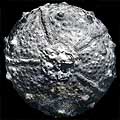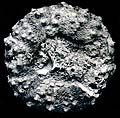The Echinoid Directory
Polysalenia Mortensen, 1932, p. 490
| Diagnostic Features |
|
|---|---|
| Distribution | Late Cretaceous (Campanian), Sweden. |
| Name gender | feminine |
| Type | Polysalenia notabilis Mortensen, 1932, by original designation. |
| Species Included |
|
| Classification and/or Status |
|
| Remarks |
|


